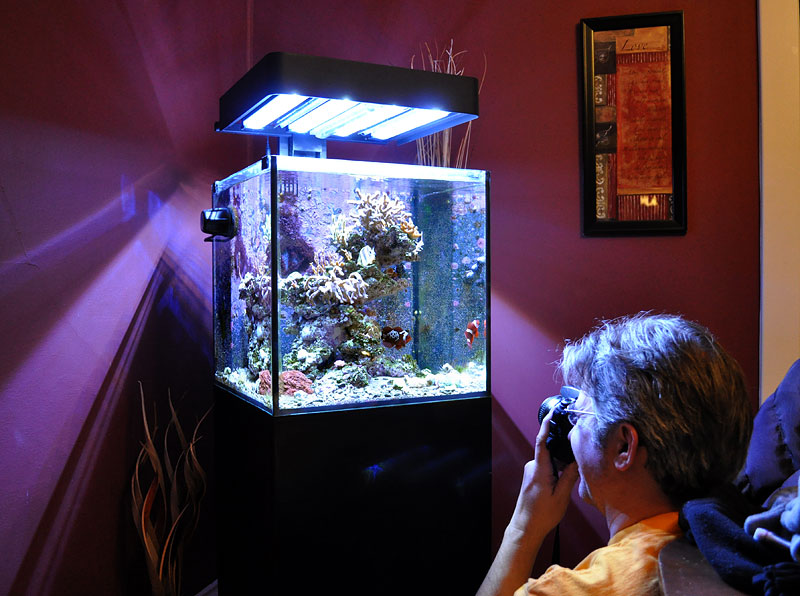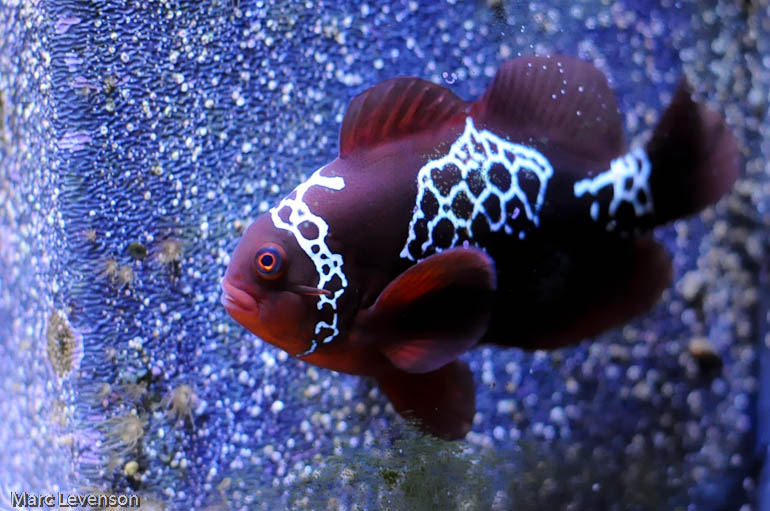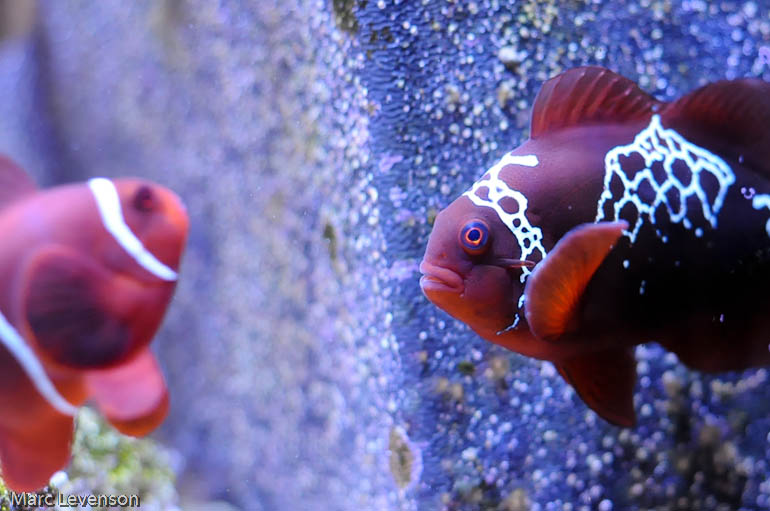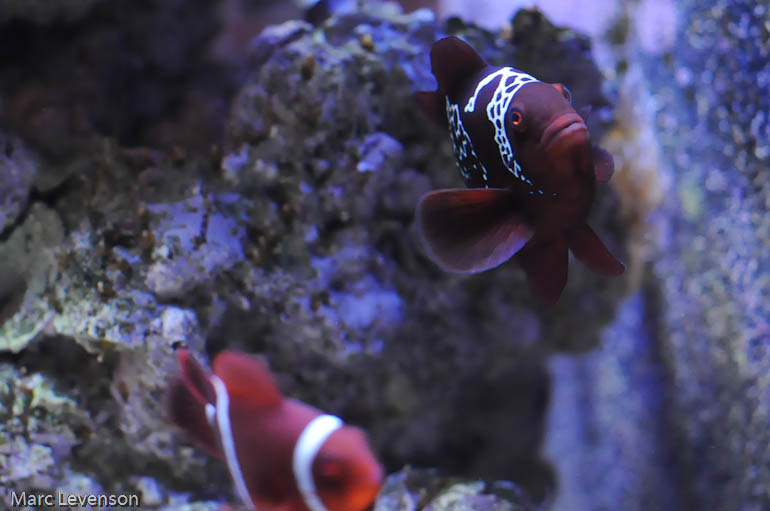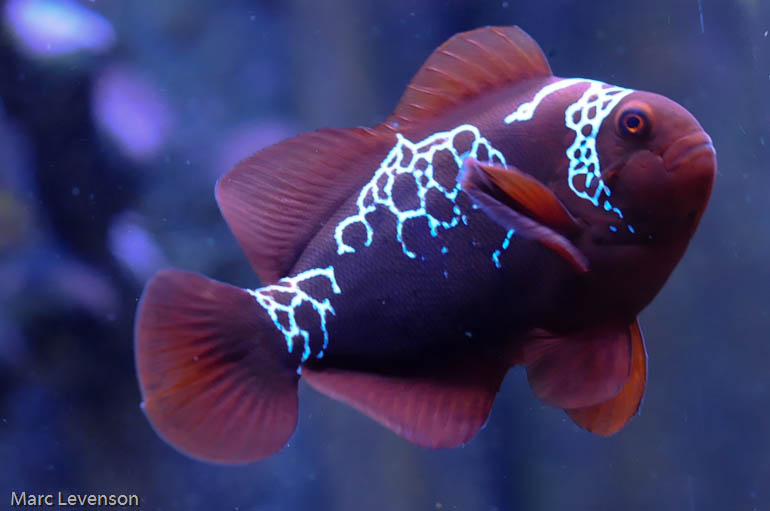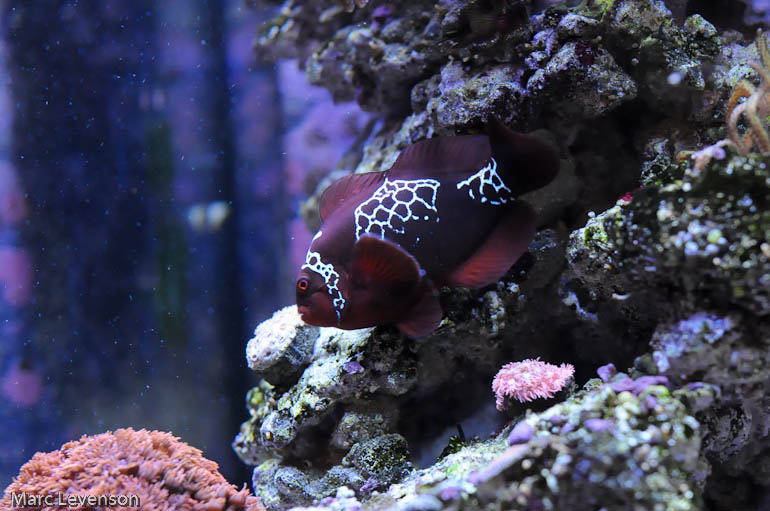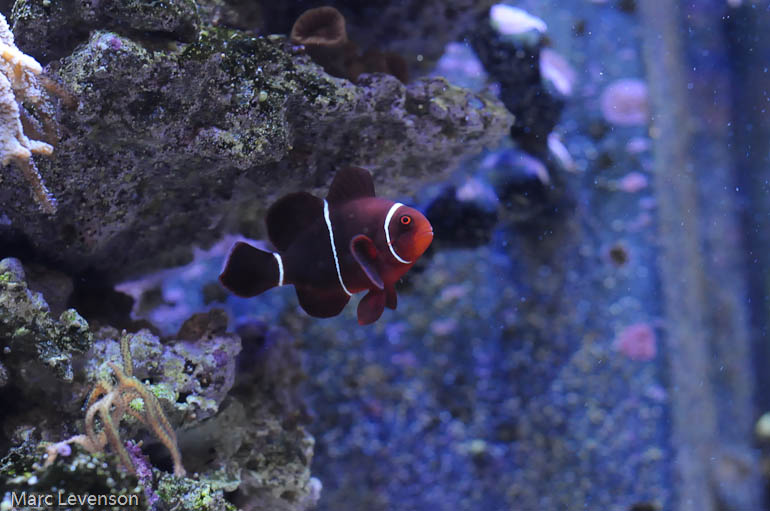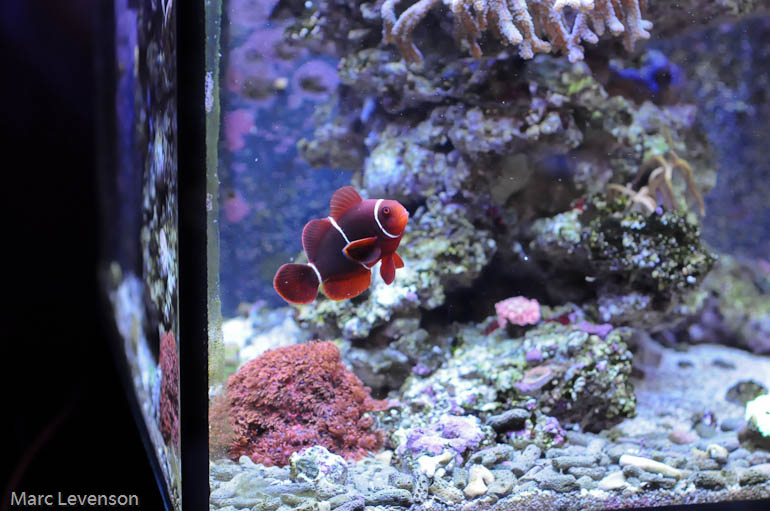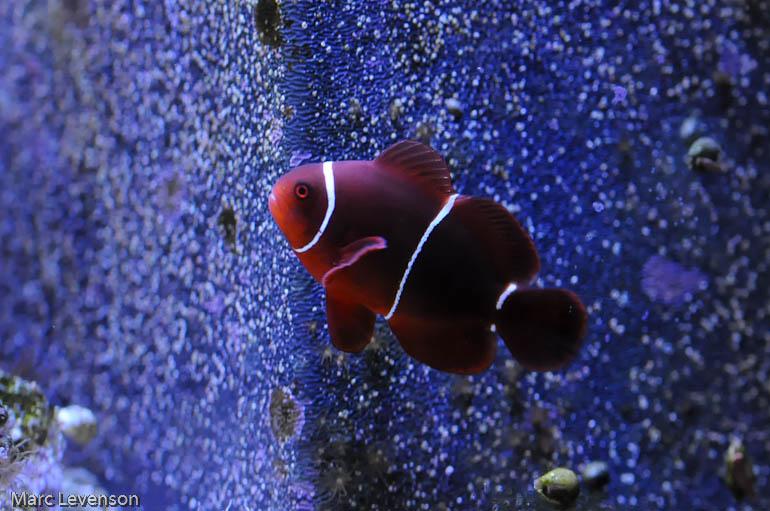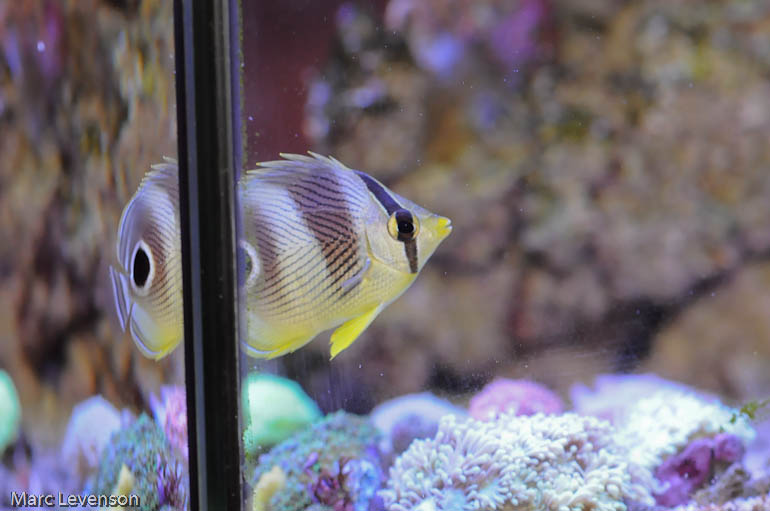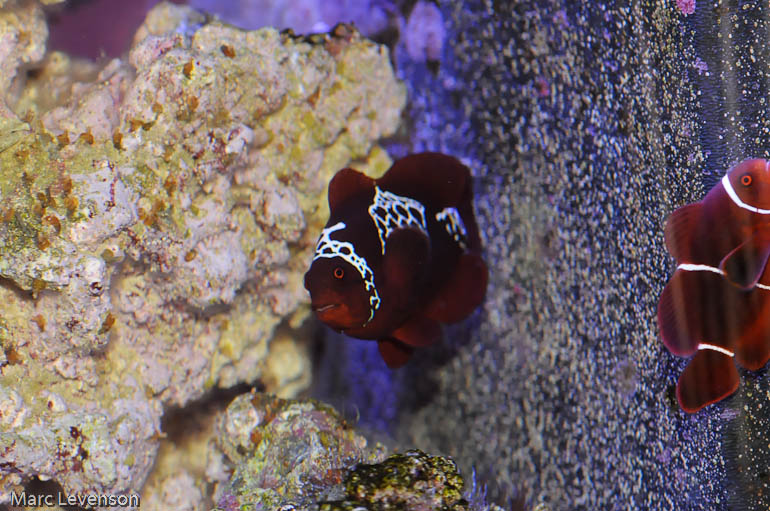Visiting a rare fish: the Lightning Maroon Clownfish
by
, 12-18-2011 at 12:54 AM (14774 Views)
Last week I had the unique opportunity to visit the Lightning Maroon Clownfish in Duluth, MN. Matt Pedersen is this special fish's care giver, and he's been doing an un-enviable task to get it breeding for the past 20 months under intense pressure from hobbyists everywhere. Matt has bred a number of fish and we await yet another success story with tiny Lightning-marked fry to enter the market.
If you've been under a rock and haven't heard of this fish by now, know that it comes from Papua New Guinea and its markings are implausible to believe. Accusations of "photoshopping" this fish spread across the web, but the proof waylaid those naysayers. You can follow all updates from Matt on his dedicated blog: http://www.lightning-maroon-clownfish.com/
The tank is displayed in the dining room, housing this fish with a number of back-ups for power outages and a controller to notify Matt immediately of any changes in circumstances. When I entered his home, I immediately was drawn to this unique fish before I'd even seen my room.
Photo by Matt Pedersen
I took a number of pictures of the female maroon clown, as this was a rare opportunity to see one in person. She's a very healthy looking fish. Ignore the algae on the glass.
Photos taken with a Nikon D90 with 18-200mm lens and a 105mm Macro lens.
The tank has some corals dotting the aquascape: A red ORA Goniopora, a birdsnest colony, as well as some Duncans to name a few.
Her boyfriend is always nearby. I'd say he's willing to take one for the team.
This Foureye Butterfly, Chaetodon capistratus, is tasked to eliminate the aiptasia in the tank but can't quite get the job done. The LMC is quick to chase it away no matter how often it tries to finish off the last of them.
Matt is very careful that nothing can pollute the water. Food is dropped in the corner of the tank, without putting his fingers in the water to avoid contaminants. A glass lid prevents the fish from carpet surfing. The lighting cycle is provided with LEDs from Ecoxotic. A Vortech MP10 provides the flow, and is plugged into a battery back up during power outages.
During my four days in Duluth, I spent quite a bit of time enjoying the Lightning Maroon. I talked to her, encouraging her to get to breeding already. She nodded in agreement, I'm positive. The male seemed oblivious to our conversations, but was always nearby. Here's hoping for some action, Matt. Let's see what Spring Fever does for this pair. When you get those clutches of eggs, I know everyone will be holding their breath to see if those markings transfer to the fry. Imagine a tank with 50 or 100 of these little guys swimming about... I'd have a real tough time parting with any, that's for sure.




